Description
Title: Pokhara y el Annapurnas (Spanish)
Subtitle:
Author: Dinesh Shrestha & LB Thapa
ISBN:-978-99933-47-97-2
pages:- 96
Edition: 2012
Language: Spanish
Bound: Soft Cover
this book is a fascinating visual records of Pokhara valley and the most
beautiful touristic place of Nepal. This is not easy to record all of the
moments of the region but the photographer’s every effort made this possible;
In this illustrated and informative book shares images of the high quality
photos of picturesque landscape, it’s huge Natural diversity, people and their
rich culture. Published in 5 different languages, this book could be the best
selection for everyone who visited or planned to visit in Pokhara.
POKHARA
The very name Pokhara invokes a vision of tranquility and vibrant green hills steep in magnificence. Rich with lush vegetation and dotted with flickering lakes, Pokhara contains one of the most breathtaking vistas in the world.
Three of the world’s ten highest mountains can be seen from there. Throw in the majestic Machhapuchhare (Mount Fishtail) as its image falls onto Fewa lake, and it is sure to leave any visitor spellbound.
Located at the base of the Annapurna range, Pokhara is also renowned as one of the adventure hubs of Nepal. It is the starting point for dozens of trekking and rafting destinations while power gliding up to five kilometres high and paragliding offer the thrill of a life time without having to raise a sweat – although they’re guaranteed to get the heart pumping.
At its lowest point, Pokhara is just 730 metres above sea level. But within 30 kilometres you can be on a 7500 metre peak. Nowhere else in the world does the topography rise like that. And as a result, when the clouds hit the mountains, they drop their loads onto the beautiful city, giving rise to its incredibly lush vegetation.
Snow clad mountains
Machhapuchhare imposes itself on Pokhara’s skyline is as if it was the highest and toughest mountain in the world. From other directions its twin peaks resemble the tail of a fish (hence the name Fishtail), but from Pokhara it just looks like a jagged blade of treacherous, snow-covered rock. It has never been climbed, but that owes more to its religious associations with the god Shiva than to its inhospitality. Despite it’s soaring appearance, at 6993 metres it is actually one of the smaller mountains in the vicinity. In 1957 the only expedition ever to attempt the climb made it to within 50 metres of the summit before turning back. Climbers Wilfrid Noyce and ADM Cox had promised they wouldn’t go to the top because of the peak’s religious status. Since then, it has been off limits to mountaineers.
For difficult peaks, one merely has to go to Mount Annapurna 1, just 40 kilometres from Pokhara. Its name means “abundance of food”. In Hinduism, Annapurna is the kitchen goddess – the deity who feeds, and without whom there is starvation and fear. But for mountain climbers there are more clear and present reasons to be afraid. In percentage terms, more climbers die trying to reach her top than any other. One hundred and fifty three people have made it, while 58 have died trying – a fatality-to-summit ratio of 38 per cent..
Slightly higher than Annapurna 1 is Mount Dhaulagiri at 8168m. The gorge between the two giants, carved out by the mighty Kali Gandaki river which carves its way down from Tibet, is considered the deepest in the world. The trade that the ancient river brought through the Himalayas from Tibet and China established Pokhara as an important multicultural centre from earliest times where Hindu and Buddhist cultures have co-existed.
Just like today, what traveller wouldn’t have wanted a few days’ rest when they hit such a town.
Lakes
The Pokhara valley is also famous for its seven lakes, but the most well known is Fewa Lake where the tourism industry is centred. The Tal Barahi temple is located just off shore, making for a leisurely paddle across the still waters. Buddhist and Hindu pilgrims throng to the temple. On the other side of the lake is the vibrant Rani Ban, a protected forest rich with wild animals and birds with the stunning white World Peace Pagoda rising above it.
The more peaceful Begnas Lake is the second largest lake in Pokhara. It is separated from Rupa Lake by a small hill, so the two are often referred to as the twin lakes.
Seti Gorge
The porous ground beneath Pokhara is riddled with caves, but the most spectacular carving job is done by the Seti River which has cut a deep rift through the middle of town. In places it’s just a metre wide, but 50 metres deep. The best place to see it is from the KI Singh Bridge, Mahendrapool Bridge and China Bridge at Prithvi Chowk. Otherwise, the Seti Gorge remains elusive.
Further downstream, one of the Seti River’s tributaries, the Pardi Khola, simply vanishes underground at a place known as Devi’s falls. It apparently takes its name from a Swiss man called David who was washed to his death with his girlfriend during a flash flood there in 1961. The river pops up again some 500 metres downstream.
Sarangkot
The word ‘kot’ means fort, and Sarangkot was once an important bastion on the top of a 1592 metre hill in the days when what we now call Nepal was divided into 46 different kingdoms, with much cut and thrust between them. Sarangkot is an eight kilometre trek from Fewa Lake and when you get there you can see why it was important strategically and why people still bother to walk all that way – although you can now catch a taxi too. The sunrises and sunsets are spectacular, spreading their rich hues of red and gold across the mountains and the Pokhara valley. And when the skies are clear you can see Mount Dhaulagiri (8168m), Mount Annapurna-II (7937m), Mount Annapurna-I (8091m), Mount Himchiuli (6441m), Mount Machhapuchhare (6997m), Mount Gangapurna (7450m), Mount Annapurna-IV (7525m), Mount Annapurna-II (7937m), Mount Manaslu (8156m) and Mount Ganesh (7429m).
The lush hill is always covered with beautiful plants. Rhododendrons – the national flower of Nepal – can be seen here in all their glory.
When to visit
The most suitable time to visit Pokhara and the Annapurnas is October and November, in autumn; and February, March and April in late winter/spring. During these months, the climate is best for sightseeing and trekking. While the Katmandu valley is shrouded in fog and mist, Pokhara is blessed with clear weather.
While winter isn’t a good time to trek, Pokhara’s skies are clearest during December and January when the air is so crisp you feel like you can almost touch the 8000 metre giants on the horizon.

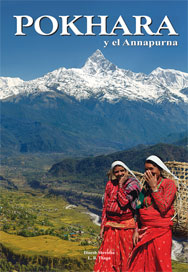
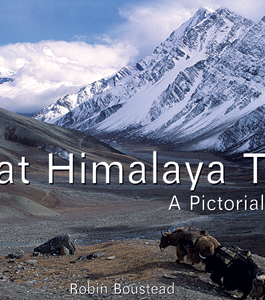
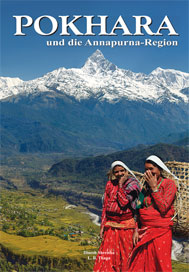
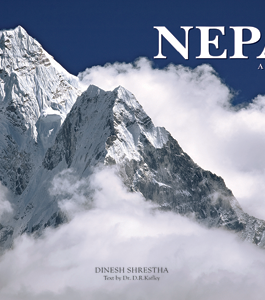
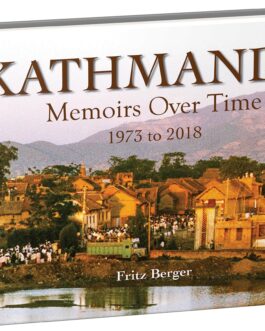



Reviews
There are no reviews yet.